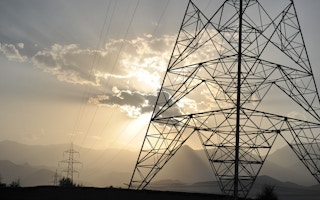In the last five years or so, so-called “disruptive” technologies—such as distributed renewable energy, smart grids, energy storage, and fuel cells——have clearly impacted the energy world.
While energy professionals are still adjusting to the new reality, let’s take a look at blockchain, an emerging yet potentially even more disruptive technology discussed during a seminar on advanced clean technology solutions for development at ADB’s recent Annual Meeting in Yokohama, Japan.
Blockchain is a game-changer, according to Don Tapscott, a TED Talk speaker and one of the world’s leading thinkers on the economic and social impact of technology.
“The technology likely to have the greatest impact on the next few decades has arrived. It’s not social media. It’s not Big Data. It’s not robotics. It’s not even artificial intelligence. It’s called blockchain.” said Tapscott.
So, what does the somewhat obscure term “blockchain” mean exactly? How might it affect the future of energy systems? And how will this technology impact ADB’s lending and technical assistance operations in developing Asia?
Let’s first try to briefly explain the concept. In a traditional environment, regulated third parties, such as public utilities or banks, act as intermediaries for financial, energy, or any other transactions. The service that these intermediaries provide add cost to every transaction.
Blockchain, on the other hand, allows people to trust each other and transact directly peer-to-peer through a tamper-proof database that can be accessed by any member of the network. A simple example is buying a used car using a secure electronic ledger that can debit the buyer and credit the seller, instead of a bank-issued check, to make the payment and cut out the middleman.
This means that intermediaries become obsolete. Its most noteworthy feature is that blockchain isn’t dependent on a central authority for storing data, so there is no single point of failure.
Blockchain comes at right moment to transform energy sector
To grasp blockchain’s impact, you might want to use the 5 Ds as a memory aid. It is technology that is digitalised, deregulated, decentralised, distributed, and democratised.
Interestingly, the world’s energy systems are also following the 5 Ds of blockchain as a greater share of renewable energy is being integrated into electricity grids thanks to smart grid technology, the proliferation of rooftop solar systems, and better battery storage.
This technology comes at the right moment to support the transformation of the energy sector.
Blockchain technology can help developing countries in the Asia-Pacific to leapfrog in the development of their energy sectors. There are four areas where development institutions can help them do this.
1. Capacity building and institutional strengthening
Support can be given to help energy regulators and power utilities use blockchain to improve their financial management. The technology can then help the companies register and record the ownership and current state of assets, digitise contracts, and verify and execute metering and billing transactions.
2. Modernising grids.
While blockchain may seem at first too disruptive for power utilities, it can actually help them keep up with rising power demand in smaller, lower-value blocks.
Blockchain can also make existing energy industry processes more efficient by serving as the backbone for the smart grid systems that automatically diagnose and respond to network emergencies and problems. This way, for instance, if a natural disaster destroys transmission towers or transformer substations, the grid can quickly and automatically reroute power to prevent a massive blackout.
3. Renewable energy mini and microgrids.
Blockchain empowers individual consumers and producers. When each household that can generate and store electricity can enter into automated, peer-to-peer transactions with other households or sell power back into the grid at the market price, the households (consumers) become “prosumers”.
The technology can help organise, coordinate and secure resilient peer-to-peer power systems.
4. Green finance and carbon trading systems.
Blockchain can be deployed to both schemes, which are crucial to support the implementation of developing member countries’ Nationally Determined Contributions under the 2015 Paris Agreement against climate change.
The technology can help provide guarantees of origin, emission allowances, and renewable energy certificates.
“
The technology likely to have the greatest impact on the next few decades has arrived. It’s not social media. It’s not Big Data. It’s not robotics. It’s not even artificial intelligence. It’s called blockchain.
Don Tapscott, TED Talk speaker and leading thinker on the socioeconomic impact of technology
ADB’s annual lending in the energy sector is around $5 billion per year, half of which goes to clean energy (renewable energy and energy efficiency). The other half goes to transmission and distribution systems. By including blockchain and other advanced technologies, ADB’s energy sector operations can have even greater development impacts.
It can also push developing countries in Asia and the Pacific toward the all-important 6th D – de-carbonisation of the economy.
Yongping Zhai is Technical Advisor (Energy), Sustainable Development and Climate Change Department at the Asian Development Bank. This post is republished from the ADB blog.









